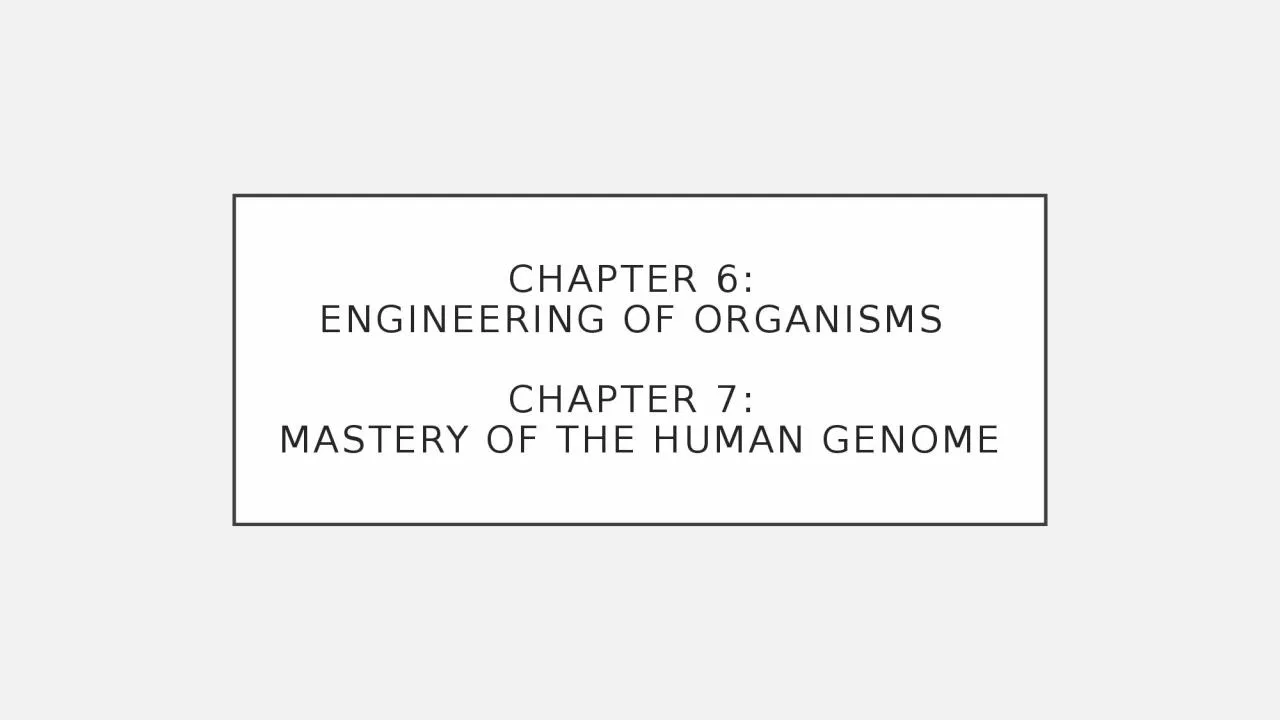

Chapter 7 Mastery of the human genome The Odin and The biohackers A Case Study TIMELINE GeneticsGenomics The projects goals included mapping the human genome which succeeded in 2003 1990 The Humane Genome Project ID: 932667
Download Presentation The PPT/PDF document "Chapter 6: Engineering Of organisms" is the property of its rightful owner. Permission is granted to download and print the materials on this web site for personal, non-commercial use only, and to display it on your personal computer provided you do not modify the materials and that you retain all copyright notices contained in the materials. By downloading content from our website, you accept the terms of this agreement.
Slide1
Chapter 6:
Engineering Of organisms
Chapter 7:
Mastery of the human genome
Slide2The Odin and The biohackers
A Case Study
Slide3TIMELINE
Genetics/Genomics
The project's goals included mapping the human genome – which succeeded in 2003
1990: The Humane Genome Project
Darwin writes
On the Origin of Species
and in doing so popularized the idea
of evolution. Built around: heredity, variation, and natural selection
1859: Darwin
1953: Watson & Crick AND Rosalind Franklin
He Jiankui used the CRISPR gene-editing system to edit DNA in human embryos to make them less susceptible to HIV.
2018: CRISPR-baby
Medel’s
pea plant experiments led to the discovery of dominant and recessive traits.
1866: Mendel
Develops rapid DNA sequencing techniques
1977: Sanger
Described the structure of DNA (the ”source code” for life) - changes in individual base pairs serve as a simple vehicle for genetic mutations.
Note: The first use of the term “eugenics” was around 1183
Slide4Research Ethics Fundamentals
The horrific history of human subjects research
eventually led to the development of formal regulations Things to consider in research ethics: Respect for Persons (consent)Paternalism vs. BeneficenceJustice (fairness)
Slide5Top-Down and Bottom-Up Engineering
Key Regulation
Three Crucial Questions
Slide6Slide7GMOs – Golden Rice
Are GMOs too harmful to be produced? Have we passed the inflection point? Reflections on the Golden Rice case study?
Slide8Chimeras:
or Human/animal hybrids
Is this sort of research rightly prohibited? Or are there good enough benefits to pursue this research?
Slide9Rapid Increase of sequencing
Personalized Medicine Goals
Concerns:
Privacy (GINA)
Harms to small groups and harms of research
Slide10Reproduction, Stem Cells, and Designer/ test-tube babies
Frist “test-tube” baby was born in 1978
Debates on personhood status of embryosDebate over stem cell researchDebate over PGD and eugenics Dolly and cloning
Slide11CRiSPr
/cas9 Babies
Other variations that would be more acceptable? Or is the moratorium on this research warranted?
Slide12The inflection Point
Is the next inflection point going to be in cloning a human as Wallach suggests?
Have we reached any inflection points in widespread use of genomic/ genetic technology? If so, what are they? Has your initial opinion of The ODIN and at home biohacking changed at all?